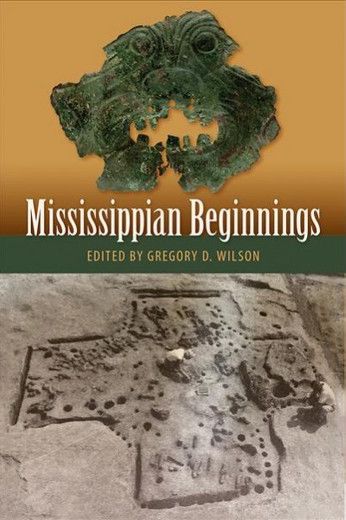
A Culture Re-examined


For decades, scholars who studied Mississippian culture — a vast network of Native American settlements from Florida to Minnesota from roughly 800 AD to 1500 — accepted the theory that these societies were shaped largely by their environments. A river valley, for example, would encourage the development of agriculture, from which would spring a chief who would manage the production and distribution of crops.
That theory, known as environmental determinism, held sway into the early 1990s, when scholars began to question what had become conventional wisdom, said Gregory D. Wilson, an associate professor of anthropology at UC Santa Barbara. Today, new scholarship is forcing anthropologists to reconsider that approach.
In “Mississippian Beginnings” (University of Florida Press, 2017), edited by Wilson, scholars mined what he called “huge data sets” to re-examine theories about the rise of Mississippian culture, which is known for its large, distinctive mounds, most shaped like pyramids.
“This edited volume is really the first attempt to look around the whole Mississippian region, from Florida to Minnesota, and look at the data with these new perspectives and try to come up with a region-by-region explanation of how all this played out,” said Wilson, who also co-authored two of the book’s chapters.
Mississippian culture data is unique, Wilson explained, because of the massive amount of field work conducted by archaeologists early in the 20th century. Much of it came during the Depression era, when the government hired graduate students and the unemployed to conduct digs throughout the Mississippian region.
“We have these data sets that are unmatched anywhere in the world,” Wilson said. “And so it allowed the testing of the older models in a way that was really impossible in a lot of other places. What people found when they really started looking at how the evidence matched up to these assumptions about managerial chiefs and environmental determinism was that you really don’t need chiefs to tell you when to plant corn. People had been doing that for a really long time on their own.”
“Mississippian Beginnings” explores the culture’s origins at a number of sites, including Cahokia, which at its peak in AD 1050 had a population of about 15,000 — bigger than London at the same time, Wilson noted.
“It’s quite clear that Cahokia was not only the biggest city in the Mississippian society, it’s bigger by magnitudes,” he said. “It was the earliest, and it played an important role in stimulating the spread and generation of Mississippian culture throughout the eastern United States.”
Wilson said a recent analysis of bone chemistry at Cahokia revealed that a third of its population was made up of migrants. So instead of the static societies assumed in earlier theoretical approaches, Cahokia’s migrants showed Mississippian societies were dynamic, and movement of people in the region was a messy business.
“There’s a whole lot more flux of people moving in, not to mention warfare, political intrigue,” he explained. “They take that old environmental adaptationist approach and just trash it. We have to turn our gaze now to more rapid, abrupt causal forces.”
In another chapter, Amber VanDerwarker, professor and chair of UCSB’s Department of Anthropology, and her co-authors explore the role of maize (corn) in the development of the Mississippians. Old environmental determinist approaches held that maize was central to the rise of the culture and subsequent leaders. But VanDerwarker found that wasn’t the case.
“We had Mississippian areas that barely dabbled in maize production or didn’t do it until hundreds of years after those societies already developed,” Wilson said. Others, he noted, had more important crops than maize.
What the data sets ultimately show, he said, is that the rise of Mississippian culture was not a tidy affair. “It’s a much messier prehistory than we thought it was in terms of the New World of the Mississippian period. Or probably any period. But it’s arguably more interesting. The simple explanations, whether those are simple environmental or simple political explanations, don’t really work so well.”



